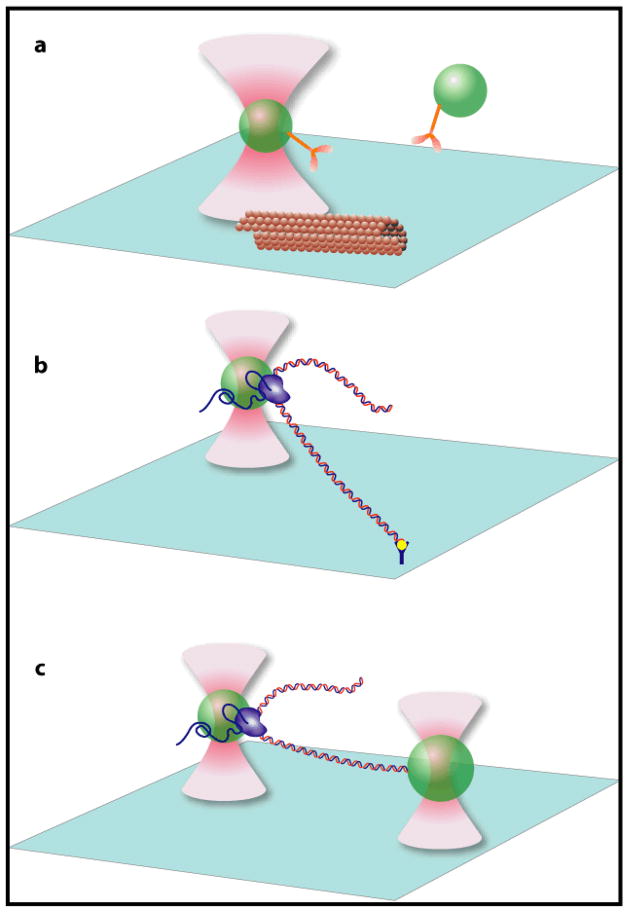Fig. 1.
Optical tweezers based assays (not to scale). (a) Interaction assay. A low concentration of polystyrene or silica beads (green spheres) sparsely coated with kinesin molecules (yellow) are diffusing in solution. One bead is captured by the optical trap formed near the focus of an infrared laser (pink). The assay consists of bringing the trapped bead to the microtubule (brown tube) attached to the surface of the trapping chamber. The force and displacement generated by the individual kinesin molecule as it walks along the microtubule are determined from the displacement of the bead in the optical trap11, 20, 57. (b) Tethered assay. An RNA polymerase molecule (purple) is attached to an optically trapped bead (green sphere), and the free end of the DNA template (red and blue) is attached to the surface of the trapping chamber. As the DNA is transcribed, the bead is pulled along the DNA by the polymerase. By moving the stage to compensate for this motion, thereby keeping the bead at the same position in the optical trap, long transcriptional records can be obtained at a constant force63. (c) Dumbbell assay. This assay is similar to the tethered assay but the free end of the DNA is attached to a second bead, which is held in a second, independent, optical trap. The force on the bead is kept constant by moving one of the traps13, 62, 64.

